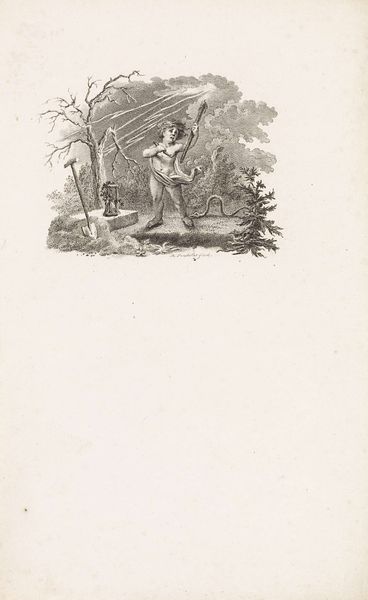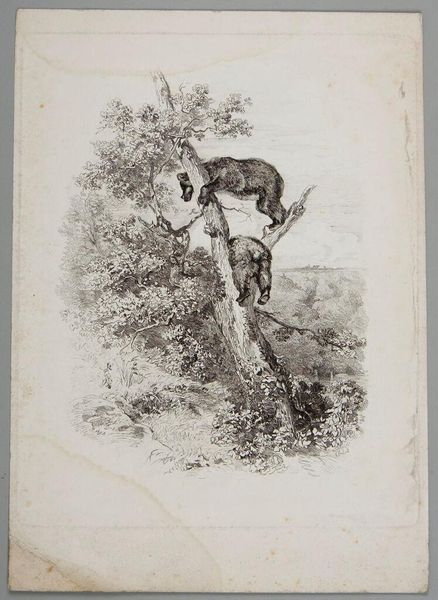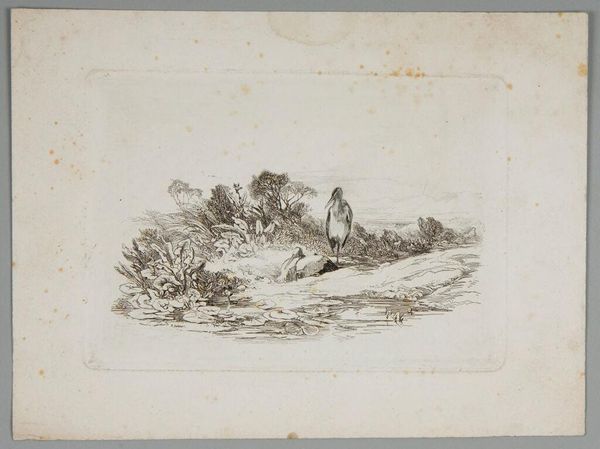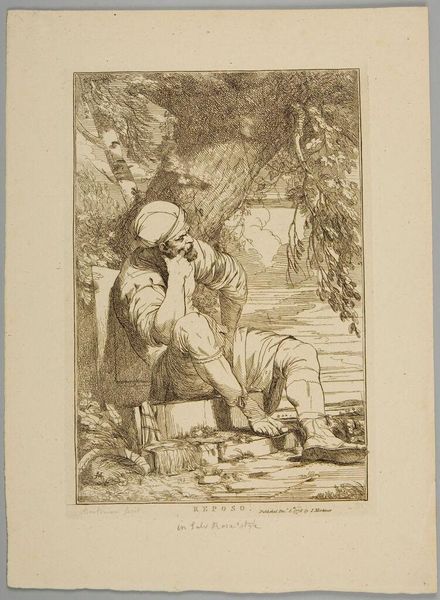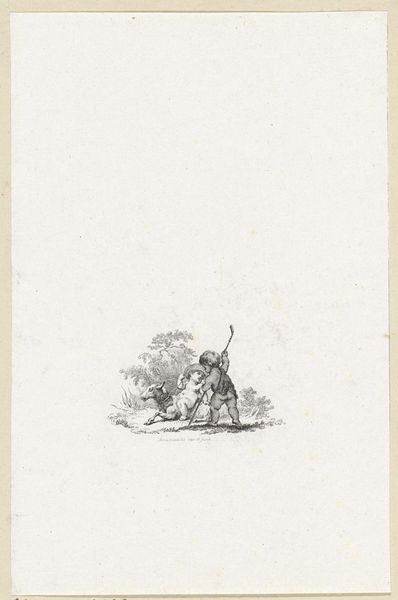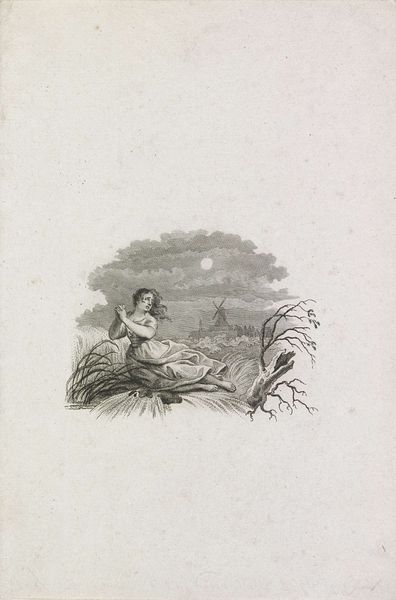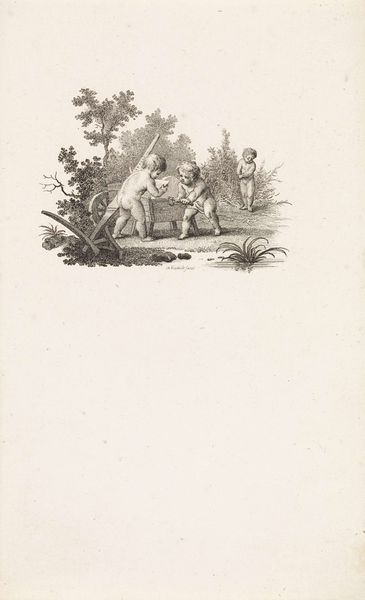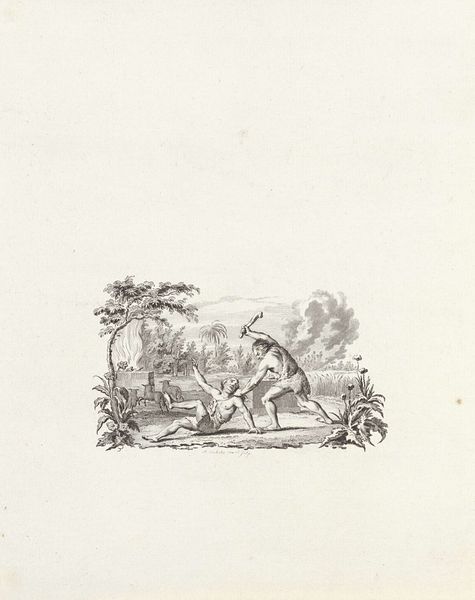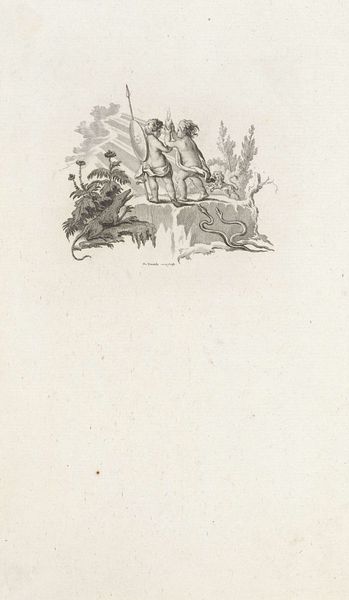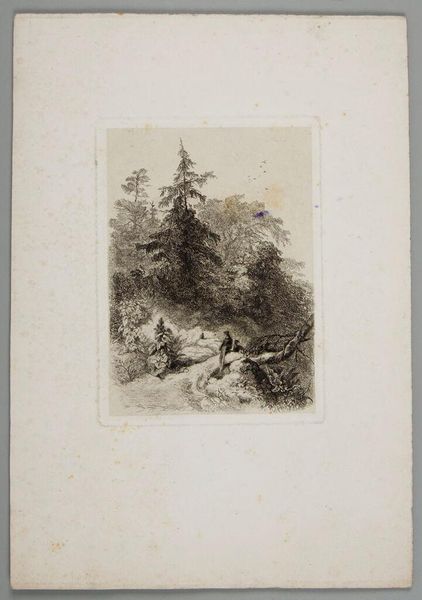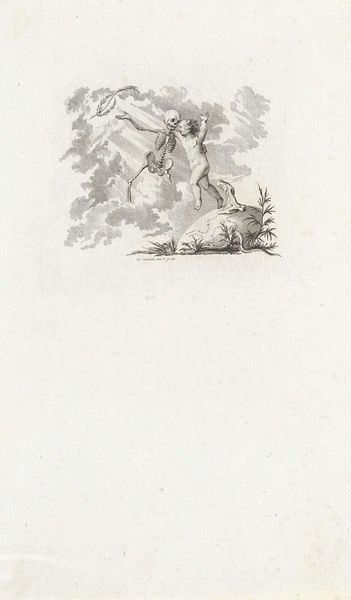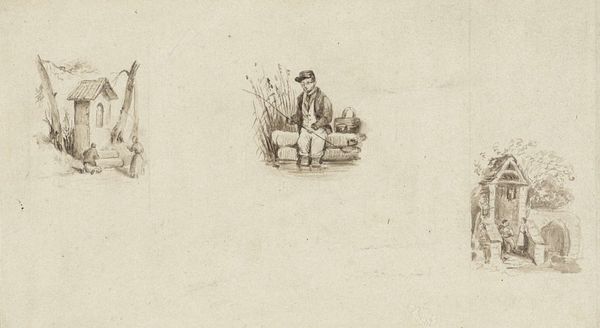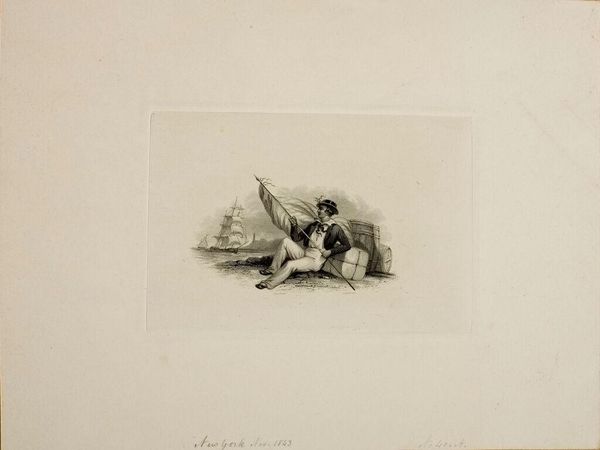
Dimensions: height 218 mm, width 135 mm
Copyright: Rijks Museum: Open Domain
Editor: So, this etching is "Putto Floating Above a Landscape" by Reinier Vinkeles, dating from around 1751 to 1816, held here at the Rijksmuseum. I’m immediately struck by its strangeness. The putto seems to be ascending away from a collection of rather ordinary objects. How do you interpret this work? Curator: It’s a compelling image, isn't it? Let’s consider it within its historical moment. Late 18th-century art often used allegory to comment on social structures and ideals. This putto, traditionally a symbol of divine love or inspiration, seems to be abandoning earthly concerns—look at the discarded tools and books below. What might this say about the relationship between the spiritual and the material? Editor: So, are you suggesting this abandonment of objects suggests they are maybe futile? I guess I just never saw them as symbolic, per se, rather just, you know, objects... Curator: Precisely. The ‘things’ on the earth, devoid of inherent symbolism at first glance, carry potential value, perhaps an allegory for the disillusionment with enlightenment values, or maybe even a critique of the emerging merchant class focusing on possessions. What does the putto’s escape mean in a society increasingly defined by labour and material wealth? The putto isn't rising so much as escaping… Editor: That's fascinating. So, Vinkeles uses the baroque style to critique these changing social dynamics of his time. Curator: Indeed. And we can extend this further. Considering post-colonialism...whose labour created the surplus alluded to here, so visibly and materially "beneath" our flying putto? Where did it all come from? Editor: I hadn't even thought about that layer of analysis...it just adds a whole new meaning. I’m seeing the artwork now in a much richer, more complex context. Curator: Exactly. It’s through this lens that we challenge the accepted canon, asking, who benefits from these idealized landscapes, and who is left out of the frame? It enriches the reading and our understanding! Editor: Absolutely! I think I'll carry that lens into my research moving forward! Thank you!
Comments
No comments
Be the first to comment and join the conversation on the ultimate creative platform.
